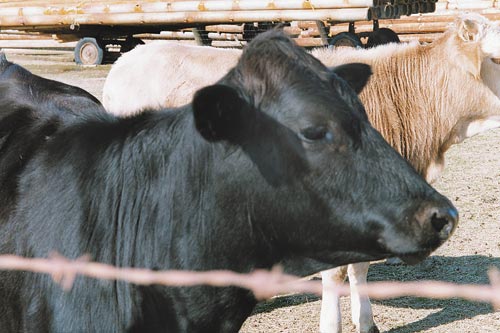
Beef cow numbers fall as producers want out
A smaller beef herd reported in USDA's Jan. 1 Cattle inventory estimates has provided the cattle markets with even more bullish news. Beef cow numbers continue to fall as producers seem to want out of the business, said Purdue University Extension economist Chris Hurt.
February 3, 2011

A smaller beef herd reported in USDA's Jan. 1 Cattle inventory estimates has provided the cattle markets with even more bullish news. Beef cow numbers continue to fall as producers seem to want out of the business, said Purdue University Extension economist Chris Hurt.
Continued decline of beef numbers
"The continued decline is related to multi-year financial discouragement due to high and volatile feed prices, shortages of pastures in some areas last summer, and developing dry conditions in the Southeast and the central and southern plains. Beef cow numbers at 30.9 million head are down 2 percent over the past year and down 6 percent since 2005," he said.
Regionally, the largest decline in beef cows was in the western Corn Belt, where numbers declined by 168,000 head in the past year. This decline was led by Missouri with 103,000 fewer head and Iowa with a 45,000 head reduction. The southern plains had a reduction of 166,000 head, led by Texas with 115,000 fewer head. The southeastern region had the third largest decline with a reduction of 121,000 head, he said.
"In the eastern Corn Belt, beef cow numbers declined by 35,000, led by a reduction of 37,000 cows in Illinois. Illinois has had a 24 percent decline in beef cow numbers since 2005. The only area of increase was in the northern and central plains, as cow numbers continue to concentrate somewhat more in the center of the country," he noted.
Producers are planning to continue to reduce numbers even further. The number of beef heifers being retained for breeding purposes is down 5 percent. This means that beef cow numbers should continue to drop at least into the USDA July inventory report. The expected 2011 calf crop should be about 35.3 million head, down 1 percent as well, he said.
Increase of dairy numbers
The dairy industry seems to have different views as they have increased both cow numbers and retained heifers by 1 percent. This industry has failed to reduce numbers sufficiently given high feed costs and is operating at a loss. It is likely the dairy industry will have to trim herds and reduce milk production to get producers back to profits, he said.
Beef producers want out
"Beef producers seem to want to get out of the industry. What will change their attitudes? There are two key factors--a return to profitability and more abundant forage and feed supplies. Since the number of heifers being retained is so low, it will be late in 2011 or early 2012 before any movement toward expansion will occur," he said.
The economist said it is possible that corn and soybean meal supplies could increase with large 2011 crop production. Unfortunately, given the limited number of acres available, trend yields may do little to increase inventories, keeping the 2011/2012 marketing year prices high and volatile.
Increasing concerns about dry conditions throughout the southeastern states as well as the central and southern plains will keep producers from expanding until those conditions change. Those three regions account for 55 percent of the beef cows, he said. (See USDA/NOAA "Drought Monitor" at http://www.drought.unl.edu/dm/monitor.html).
How high will beef prices rise?
"Prices have already been record high and seem assured of making new highs throughout 2011. Live cattle futures prices on Jan. 31 are suggesting that finished cattle will average about $113 per hundredweight for the year with quarterly prices of $108, $116, $112, and $115, respectively. These prices are supported by recovering U.S. and world consumer incomes, small beef and pork supplies, and a rapid increase in pork exports," he said.
Oklahoma 600- to 650-pound calves sold last week at $132 per hundredweight, whereas 500- to 550-pound calves were at $146. The strength in calf prices over the past six months means that finished cattle prices have increased enough to cover the much higher corn and soybean meal costs to finish cattle. Unlike the rising feed prices of 2008, the surge in feed prices over the past six months has been met by increases in both live cattle and lean hog futures prices, he said.
"Weather in 2011 and 2012 will probably be the deciding factor determining when the beef cattle industry will shift from liquidation to expansion. Favorable weather that provides above-trend corn, soybean, and wheat crops, along with abundant forages, could shift the industry into expansion by 2012," he said.
Much lower feed prices would provide strong financial incentives to expand brood cow numbers. Trend yields should provide modestly lower feed prices, and calf prices will rise proportionally next fall, providing some financial incentives to expand brood cow numbers. However, below-trend yields and shortages of forages would keep the industry in a state of contraction with even higher finished cattle prices in 2012, he said.
"Much is riding on the weather in 2011 for both crop and livestock producers--and for everyone who enjoys multiple meals a day at moderate costs," Hurt said.
You May Also Like



